To fully understand the Asian and Asian American experience on campus, we must start from the very beginning. In the 209 years since its founding, when did the first Asians arrive at Hamilton? How was their experience and how has their appearance influenced the admission of Asians after them? These are the questions that I hope to answer this summer.
Hamilton’s First Foreign Student
By Crystal Lin ’22
Zeng Laishun (曾来顺, or known by the modern spelling of his name, Chan Lai-sun) was the first Chinese student to be enrolled in a United States college from overseas and was Hamilton’s first foreign student. He studied Greek with Professor North at Hamilton from 1846 to 1848.1 He was more than an international student during a period of conflict between China and the Western sphere. According to historian Edward J.M. Rhoads, “he was a pioneer in Western studies, an early and lifelong convert to Christianity, one of the first Chinese in the United States, a leading second-echelon figure in China’s self-strengthening movement, and, during his CEM [Chinese Educational Mission] days in the United States, a diplomatic representative of the Qing government as well as an explicator of things Chinese to the American public.”.2 Despite his many accomplishments, parts of Zeng and his family’s story is a story that is familiar to many Asians who experienced foreignness in the United States.
Zeng’s Early Life:
Zeng was born around 1826 to a family of farmers in Singapore. His father was a Chinese Chaozhou native, and his mother was Malay.3 He was orphaned at a young age and forced to work to support himself. While waiting tables in the American consulate, Zeng met Joseph Travelli, a member of the American Board of Commissioners for Foreign Missions (ABCFM), who enrolled him in a Chinese day school.4 From thereon, Zeng’s education led him to adopt Western customs and ideals. In 1837, the missionaries enrolled eleven-year-old Zeng in their new boarding school in Singapore.5 There, Zeng was taught English and forbidden to speak his native tongue. His fluency in English was key to his success in the CEM and as a Chinese diplomat and representative to Western powers. However, his initially poor Chinese foundation and later immigration to the United States caused him to lose most of his Chinese speaking and writing skills. Zeng would later return to China from his study abroad and, like a foreigner, re-learn Chinese for two years.6 Zeng continued to attend boarding school until the disbandment of the Mission in Singapore.7 He was later baptized and became a life-long convert to Christianity. In fact, the role of American missionaries was so impactful that Zeng decided to work for the Mission after his study abroad. He and his family became members of the local church wherever they moved and donated regularly.
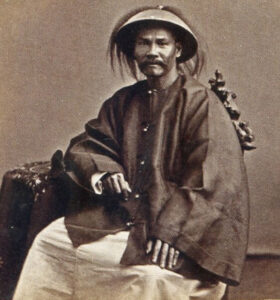
Zeng Laishun in Chinese government official attire. Courtesy of Isserman, On the Hill 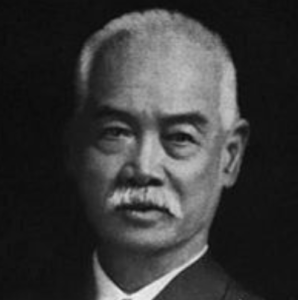
Yung Wing. Courtesy of “First Chinese American College Graduate”.
In 1843, a Presbyterian missionary, John Hunter Morrison, brought Zeng to the United States and enrolled him in a boys’ boarding school in Bloomfield, New Jersey.8 Zeng was not the first Chinese to study in the United States. There were a few other Chinese boys who were brought to the U.S. by missionaries before him. He was, however, the first Chinese to enroll and attend college in the United States. After three years in New Jersey, Zeng attended Hamilton College with the financial support of the women’s group at Utica’s First Presbyterian Church.9 This opportunity was made possible through the help of S. Wells Williams, the missionary that took over the responsibility of Zeng during his stay in the States.10 At Hamilton, Zeng studied Greek with Professor Edward North, an active member of the Glee Club, and taught Sunday school at a local presbyterian church.11 He was referred to by his classmates as “our beloved Chinaman”.12 His time at Hamilton ended abruptly when the women’s group refused to support him after two years that they initially agreed with Williams. If it weren’t for financial reasons, Zeng would have graduated from Hamilton and become the first student from China to gain a baccalaureate degree from an American university. Yung Wing (also known as Rong Hong, 容闳) would become the first Chinese to do so a couple of years after Zeng left Hamilton.13 Like Zeng, Yung was also born in a poor family, converted to Christianity, and was brought to the States by American missionaries. Although Zeng was forced to leave the United States, it was through his experience abroad that he learned the significance of Western knowledge and education. Zeng believed that it was especially true and important during a time of political conflict and turmoil in China. He and Yung would later form and lead the CEM as one of China’s first modernization efforts14.
Zeng’s Role in the Chinese Education Mission:
Zeng returned to China hoping to teach at the Morrison Educational Society (Yung’s old school), but due to insufficient funding, Zeng was later offered a position at the Canton (Hong Kong) Mission with help from Williams.15 He worked in Canton as a ‘permanent native assistant,’ taught several classes at the boarding school, and performed midday services for four and a half years.16 During his time there, he met and married Ruth Ati, who was also a Christian convert. Zeng left the Canton American Board’s Mission after a long, unsuccessful wage negotiation. He received $10 a month with housing and medical care provided. It increased to $20 a month (or about $250 a year) after he was married.17 However, it was only half the salary of an unmarried foreign missionary. Zeng asked for a raise to be almost equal to an unmarried foreign missionary, but after a year-long negotiation, the Mission declined his request.18 It was clear that his pay was unfair and favored foreigners. Like other regions in China occupied by Westerns, the Chinese natives were exploited for cheap labor. Zeng left the Mission with his wife and two daughters to Shanghai. He became a successful businessman working for two Western companies in Shanghai.19 His withdrawal from the Mission and his success brought him many critiques. Williams, his sponsor when he was abroad, perceived him as someone who was tempted to earn money rather than giving back to the mission.20 However, Zeng and his wife continued to be engaged in the local church and assisted in the Shanghai mission.
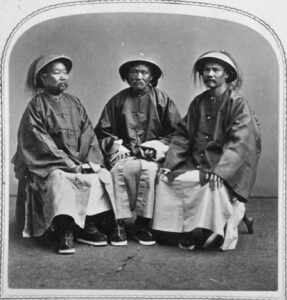
China’s defeat in the Second Opium War was devastating. The Qing government was convinced that China was superior to Western powers, but the occupation and humiliation by the West made the government desperate to strengthen the country. Chinese officials saw the value of Zeng and Yung and hired them to help these endeavors. In 1866, Zeng was hired to teach English at the Fuzhou Navy Yard School set up by Zou Zhongtang. As a reward for his work, Zeng was given an official rank of “button of the fourth rank” (四品顶戴).21 The government reassigned him in 1872 to assist in starting the CEM, a mission lobbied by Yung.22 Zeng first taught at the CEM school in Shanghai to prepare Chinese boys for education abroad, with the help of his two sons, Elijah and Spencer. Zeng and his sons were known to be disciplinarians. One student referred to the trio as “the Satan and his infernal offspring”.23 Zeng eventually moved his family to Springfield, Massachusetts, where he continued supervising Chinese boys in partnered schools.24 His and his family’s immigration to the United States was not required for his position in the CEM. Yung and other members stayed in the U.S. periodically to supervise the program. Additionally, Yung had already set up the CEM headquarters in Hartford, Connecticut; but Zeng insisted on staying in Springfield.25 The exact reasons were unknown.
Zeng’s official position in the CEM was a translator; however, he was the third-ranking member and often took upon the role of a Chinese ambassador. In March of 1873, Zeng and his family were invited to attend President Ulysses S. Grant’s inaugural and the reception at the White House.26 Zeng also assisted in the successful end of over 60,000 to 70,000 Chinese involuntary contract workers trafficked in Spain in the 1870s.27 Yung and other high-ranking members of the CEM were also involved in similar tasks overseas. In the Springfield local media, Zeng was often known as the “Chinese Commissioner of Education”.28 Rightfully, Zeng did little to correct this mistake. In 1881, the Qing government abruptly terminated the CEM because of the perceived Americanization of their students.29 Only two of the 120 students participating in the program have completed their college degree.30 Zeng and his family returned to China and stayed there for the remainder of his life. With the exception of his two sons, who were completing their college degree at Yale University.31
The Zeng Family:
Although Zeng had Chinese roots, he was more comfortable speaking English. Zeng said, “English is our family tongue. So the children grow up with two tongues in their mouths”.32 He was adamant about the ability of his children to speak English and their exposure to Western knowledge. His daughters spent some time in England, while his two elder sons attended school in the United States. His appointment in the CEM was an opportunity for his family to experience American culture firsthand. The Zeng family was the only Chinese family in Springfield, Massachusetts. Despite the increasing amount of anti-Chinese sentiments from the West, Zeng claimed that he was rarely subjected to racial discrimination. He only recalled having neighborhood children “‘shouting after them, calling their names, peeping into the windows’” when they first moved in.33 However, the incident was quickly resolved.
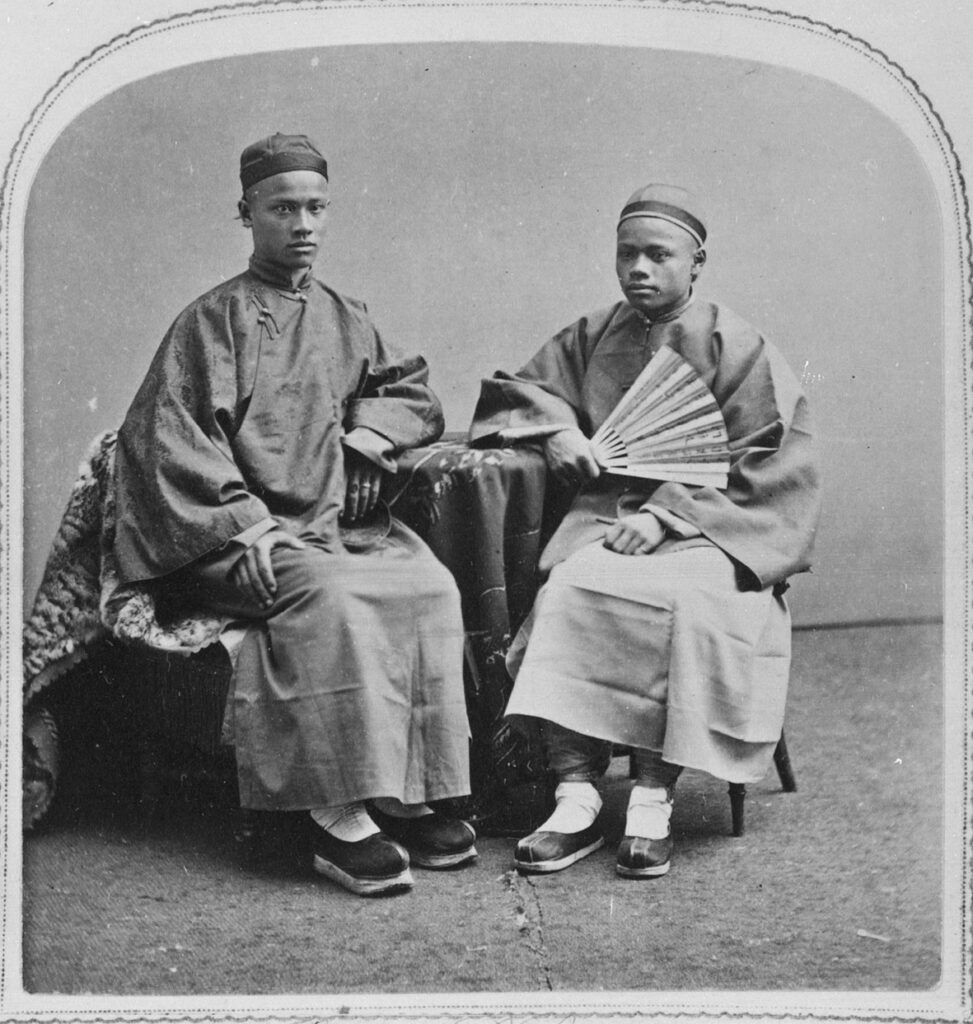
Elijah Laisun (left) and Spencer Laisun (right). Courtesy of Rhoads, “In the Shadow”. 
Zeng family portrait. From left to right: Ruth Ati (Zeng’s wife), Annie, Willie, Amy, Lena, and Zeng Laisun. Courtesy of Rhoads, “In the Shadow”.
Zeng and his family integrated into the Springfield community very easily. They attended the local church regularly. One woman from the missionary noticed that Zeng’s house contained a mix of Chinese and foreign furnitures.34 The Springfield Republican referred to him as “‘our fellow citizen’”.35 Zeng was also very popular during his stay in the United States. He spent his free time lecturing in Clinton and Utica, NY, Pittsburg, PA, and Connecticut.36 He lectured on a variety of topics about Chinese culture, philosophy, agriculture, and manners.37 Zeng spoke about Chinese art and science, from porcelain to woodblock printing, to gunpowder.38 In one lecture, he also explained China’s match-making process.39 He also visited Professor North at Hamilton College periodically.40 In a conversation with Professor North, Zeng mentioned that he doesn’t shy away from lecturing on controversial and political issues. He hoped “‘to raise a crusade against the British government for the sales of Opium and encouraging that trade to the destruction of so many human lives’”.41 While speaking to the graduating class of Hartford Public High School, Zeng said: “‘Our system is a general one, as is yours. The Chinaman that can afford it will send his boy to school; and no matter how poor he may be, he can, if he is competent, reach the chair of the prime minister…Every town in China has its school, every city its high school, and every province its university. Our system is as democratic as yours’”.42 Indubitably, Zeng’s lectures not only introduced Americans to Chinese culture but also attempted to break down established stereotypes and the perceived superiority of the White race during a time of occupation and colonization in China. In 1873, Zeng received an honorary degree from Hamilton at commencement.43 At that same occasion, Zeng donated $100 to the Alumni Fund.44
To the white elites in Springfield, Zeng was considered as one of them. Zeng was invited to join the Freemasons, a prestigious organization in the late nineteenth century.45 Although the Masons claimed to welcome men of all races and ethnicities, it was, nonetheless, white in practice. Zeng eventually accepted the invitation and became a new member in 1874. His induction, however, sparked resentment in among the non-white minority.46 Despite the white Mason’s open-armed welcome of an Asian foreigner, their invitation sparked criticism due to their refusal to acknowledge black Freemasonry.
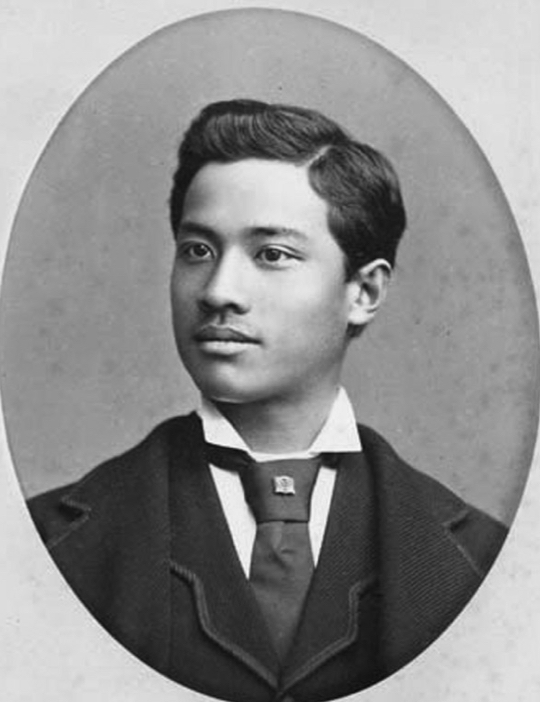
Elijah Thien Foh Laisun. Courtesy of Rhoads, “In the Shadow”. 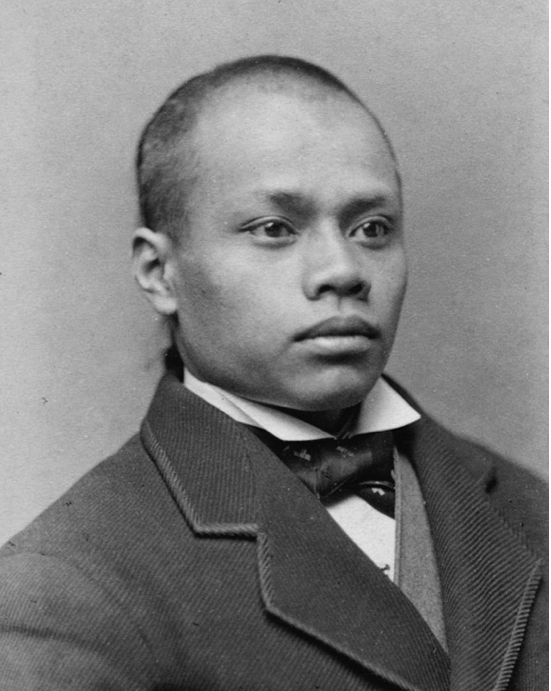
Spencer Tseng Laisun. Courtesy of Rhoads, “In the Shadow”.
Both of Zeng’s elder sons attended Springfield High School after passing the entrance exam.47 They were also one of the first students accepted to the CEM program. Like their father, Elijah and Spencer frequently spoke about China and made appearances in the local news articles. Elijah gave a speech in class about “the religious beliefs of the Chinese,” while Spencer delivered an oration in Chinese during the inauguration ceremony of Mayor Spooner.48 After only two years in the United States, Elijah passed the college entrance examination with distinction and was admitted to the Sheffield Scientific School of Yale College. He was more proficient in Latin than any other applicant.49 However, his college career did not begin on a good start. In a hazing incident, a few of his friends cut off his queue (or that he was pressured to cut it off himself). It was mandated by the Qing government that all adult male subjects have a queue. The loss of his queue cost Elijah his CEM scholarship, but he managed to stay at Yale.50 Spencer joined his brother at Yale College in 1875. He went on to study Greek like his father. In an English composition contest, Spencer won first prize on his paper on Confucianism.51
After the CEM was dismantled, the Zeng family re-migrated back to China. Zeng spent the rest of his life in Tianjin as Viceroy Li Hongzhang’s personal secretariat.52 The North-China Herald reported that Zeng “‘assisted at nearly every important transaction with foreign powers with which the Viceroy Li has been concerned’”.53 Elijah graduated Yale with an engineering degree.54 He was China’s first scientific engineer. Spencer dropped out of Yale and became a journalist. He was said to be “one of the first to forecast the gravity of the Boxer rebellion”.55 Zeng’s two daughters, Annie and Lena, both married Westerners. Annie founded the Chinese Red Cross and was a crusader against foot-binding practice in China.56 She married a Danish ship captain.57 Lena married a “land agent and broker” based in Shanghai.58 Zeng passed away at age sixty-nine in 1895.59
Although it remains unclear why Zeng was the last Asian student on the Hill until 1924 and how Zeng impacted admissions of Asians and Asian Americans at Hamilton, it is clear that he influenced the American public’s perception of China and Chinese people.60 The story of Zeng and his family is not only about their legacies in China and in the United States, nor the impact of Hamilton on Zeng’s career, but how parts of their story are shared with Asians and Asian Americans today, despite the generational difference. It was an honor to research and to retell Zeng and his family’s story.
Notes
1. Maurice Isserman, On the Hill: A Bicentennial History of Hamilton College, (Clinton: Trustees of Hamilton College, 2011), 260.
2. Edward J. M. Rhoads, “In the Shadow of Yung Wing: Zeng Laishun and the Chinese Education Mission to the United States,” Pacific Historical Review 74 no. 1 (February 2005), 22, https://doi.org/10.1525/phr.2005.74.1.19.
3. Rhoads, “In the Shadow,” 23.
4. Rhoads, “In the Shadow,” 23.
5. Rhoads, “In the Shadow,” 23.
6. Rhoads, “In the Shadow,” 26.
7. Rhoads, “In the Shadow,” 24.
8. Rhoads, “In the Shadow,” 24.
9. Isserman, On the Hill, 260.
10. Rhoads, “In the Shadow,” 25.
11. Rhoads, “In the Shadow,” 25.
12. Isserman, On the Hill, 260.
13. “First Chinese American College Graduate Yung Wing 1828-1912,” Chinese American Heroes, accessed July 11, 2021, http://chineseamericanheroes.org/wp-content/uploads/2015/04/Yung-Wing-1.pdf.
14. Rhoads, “In the Shadow,” 19.
15. Rhoads, “In the Shadow,” 26.
16. Rhoads, “In the Shadow,” 26.
17. Rhoads, “In the Shadow,” 28.
18. Rhoads, “In the Shadow,” 28.
19. Rhoads, “In the Shadow,” 29.
20. Rhoads, “In the Shadow,” 29.
21. Rhoads, “In the Shadow,” 31.
22. Rhoads, “In the Shadow,” 31.
23. Rhoads, “In the Shadow,” 33.
24. Isserman, On the Hill, 260.
25. Rhoads, “In the Shadow,” 34.
26. Isserman, On the Hill, 260.
27. Rhoads, “In the Shadow,” 42.
28. Rhoads, “In the Shadow,” 40.
29. Rhoads, “In the Shadow,” 19.
30. Rhoads, “In the Shadow,” 20.
31. Isserman, On the Hill, 260.
32. Rhoads, “In the Shadow,” 33.
33. Rhoads, “In the Shadow,” 49.
34. Carl T. Smith, “Chan Lai-sun and His Family: A 19th Century China Coast Family”, Royal Asiatic Society Hong Kong Branch 16 (1976), 114.
35. Rhoads, “In the Shadow,” 49.
36. Isserman, On the Hill, 260.
37. Rhoads, “In the Shadow,” 44.
38. Rhoads, “In the Shadow,” 45.
39. Rhoads, “In the Shadow,” 45.
40. Isserman, On the Hill, 260.
41. Rhoads, “In the Shadow,” 46.
42. Rhoads, “In the Shadow,” 46.
43. Isserman, On the Hill, 260.
44. Isserman, On the Hill, 260.
45. Rhoads, “In the Shadow,” 49.
46. Rhoads, “In the Shadow,” 50.
47. Rhoads, “In the Shadow,” 37.
48. Rhoads, “In the Shadow,” 37.
49. Rhoads, “In the Shadow,” 37.
50. Rhoads, “In the Shadow,” 37.
51. Rhoads, “In the Shadow,” 39.
52. Rhoads, “In the Shadow,” 52.
53. Rhoads, “In the Shadow,” 53.
54. Isserman, On the Hill, 260.
55. Rhoads, “In the Shadow,” 55.
56. Isserman, On the Hill, 260.
57. Carl T. Smith, “Chan Lai-sun and His Family,” 115.
58. Carl T. Smith, “Chan Lai-sun and His Family,” 116.
59. Rhoads, “In the Shadow,” 54.
60. Isserman, On the Hill, 260.
Bibliography
Chinese American Heroes. “First Chinese American College Graduate Yung Wing 1828-1912.” Accessed July 11, 2021. http://chineseamericanheroes.org/wp-content/uploads/2015/04/Yung-Wing-1.pdf.
Isserman, Maurice. On the Hill: A Bicentennial History of Hamilton College. Clinton: Trustees of Hamilton College, 2011.
Rhoads, Edward J. M.. “In the Shadow of Yung Wing: Zeng Laishun and the Chinese Education Mission to the United States.” Pacific Historical Review 74 no. 1 (February 2005): 19-58.
Smith, Carl T. “Chan Lai-sun and His Family: A 19th Century China Coast Family.” Royal Asiatic Society Hong Kong Branch 16 (1976): 112-116.
